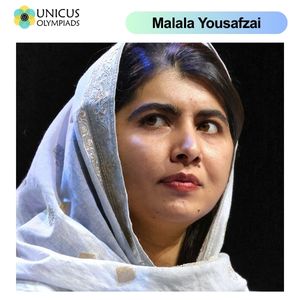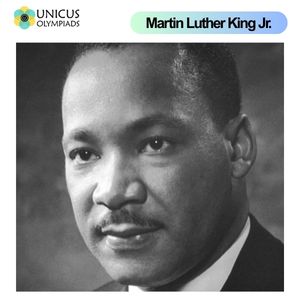

The Nobel Peace Prize is one of the most prestigious international awards, recognizing individuals or organizations that have made significant contributions to peace, human rights, and social justice. Throughout its history, the prize has been awarded to many exceptional individuals who have driven change through peaceful activism. One such laureate is Malala Yousafzai, a young advocate for girls' education, who received the Nobel Peace Prize in 2014 for her relentless fight for education in the face of violence and oppression. Malala, along with other Nobel Peace Prize winners, has shown how peaceful activism can lead to monumental societal change. This article delves into how Malala and other notable winners have used peaceful means to drive change and make the world a better place.
Malala Yousafzai, born in Pakistan in 1997, is one of the youngest recipients of the Nobel Peace Prize. She became internationally recognized for her activism advocating for girls' education in her native Swat Valley, where the Taliban had banned girls from attending school. Despite being shot by a Taliban gunman in 2012 for her outspoken views, Malala survived the attack and continued her mission to promote education for girls worldwide. She became a symbol of resilience, courage, and the power of peaceful activism.

On October 9, 2012, Malala was shot in the head by a Taliban gunman while riding a bus home from school. The attack, which was intended to silence her activism, instead fueled her global campaign for girls' education. Malala was flown to the United Kingdom for medical treatment, where she made a remarkable recovery. The attack sparked worldwide outrage and led to a massive outpouring of support for Malala’s cause.
Malala’s advocacy work is supported by the Malala Fund, a nonprofit organization she co-founded in 2013. The Malala Fund’s mission is to champion girls' education and empower young girls to achieve their potential. Through the Malala Fund, she has raised millions of dollars to support education initiatives in countries like Nigeria, Afghanistan, and Pakistan, where girls face significant barriers to education.
Malala was awarded the Nobel Peace Prize in 2014, alongside Kailash Satyarthi, an Indian child rights activist, for their struggle against the suppression of children and young people and for the right of all children to education. At just 17 years old, Malala became the youngest-ever Nobel laureate. Her recognition by the Nobel committee brought unprecedented global attention to the issue of girls’ education and reinforced the idea that peaceful activism could achieve real change.
While Malala is one of the most prominent modern-day Nobel Peace Prize laureates, many other winners have used peaceful activism to bring about social and political change. These individuals have shown how non-violent methods, such as dialogue, advocacy, and civil disobedience, can be powerful tools for addressing injustice and inequality.
Martin Luther King Jr., the iconic American civil rights leader, was awarded the Nobel Peace Prize in 1964 for his leadership in the struggle against racial segregation and his advocacy for non-violent resistance. King’s philosophy of non-violence was deeply influenced by Mahatma Gandhi and was a key aspect of the Civil Rights Movement in the United States. Through peaceful protests, marches, and speeches, King mobilized millions of Americans to demand equal rights and social justice.

Mother Teresa, who was awarded the Nobel Peace Prize in 1979, dedicated her life to helping the poor, the sick, and the needy. She founded the Missionaries of Charity, an organization that provides care for the homeless, orphans, and individuals suffering from leprosy and AIDS. Her work focused on the idea of serving humanity with love and compassion, advocating for the dignity of every individual.

Aung San Suu Kyi, leader of Myanmar’s pro-democracy movement, was awarded the Nobel Peace Prize in 1991 for her non-violent struggle against the military dictatorship in Myanmar. Despite being under house arrest for much of her political career, Suu Kyi’s efforts to promote democracy, human rights, and peace in Myanmar gained international recognition.

The Nobel Peace Prize winners, including Malala, Martin Luther King Jr., Mother Teresa, and Aung San Suu Kyi, demonstrate the power of peaceful activism in achieving profound social, political, and cultural change. Their stories offer valuable lessons on the importance of non-violence, persistence, and compassion in the fight for justice and equality.
One of the central themes in the activism of Nobel laureates is the use of non-violent methods to challenge oppressive systems. Figures like Martin Luther King Jr. and Malala have shown that peaceful protest, civil disobedience, and dialogue can be powerful tools for achieving political and social change. Non-violence not only avoids the harm that violence causes but also fosters empathy and understanding between conflicting parties.
Another lesson from these Nobel laureates is the importance of persistence in the face of adversity. Many of these leaders faced significant opposition, hardship, and even violence for their beliefs. Despite these challenges, they remained committed to their causes, showing that sustained efforts and unwavering commitment are necessary to bring about meaningful change.
These leaders have also shown that peaceful activism is not just about individual action but about empowering others to take part in the movement. Through their speeches, writings, and actions, they have mobilized people worldwide to advocate for human rights, equality, and social justice. The global impact of their work demonstrates the power of collective action in creating a more just and equitable world.